By Rick VanSickle
B.C. wine country is booming, of that there is no doubt.
Mergers and acquisitions. New wineries popping up every week, it seems. A steady migration of talented winemakers making the trek west from Ontario. And, just announced by the British Columbia Wine Institute, increasing buy-in from consumers with nearly 20% market share for B.C. VQA of all wines sold in the province.
“It was a special time for us this year because it’s an all-time high of B.C. VQA wine sold in the B.C. market,” BCWI president and CEO Miles Prodan said. “So 19.25 per cent, which is the lion’s share of any other country, really embraces or talks about B.C. support for B.C. wine.”
The 19.25 per cent market share represented a three and a half per cent increase from the previous 12 months.
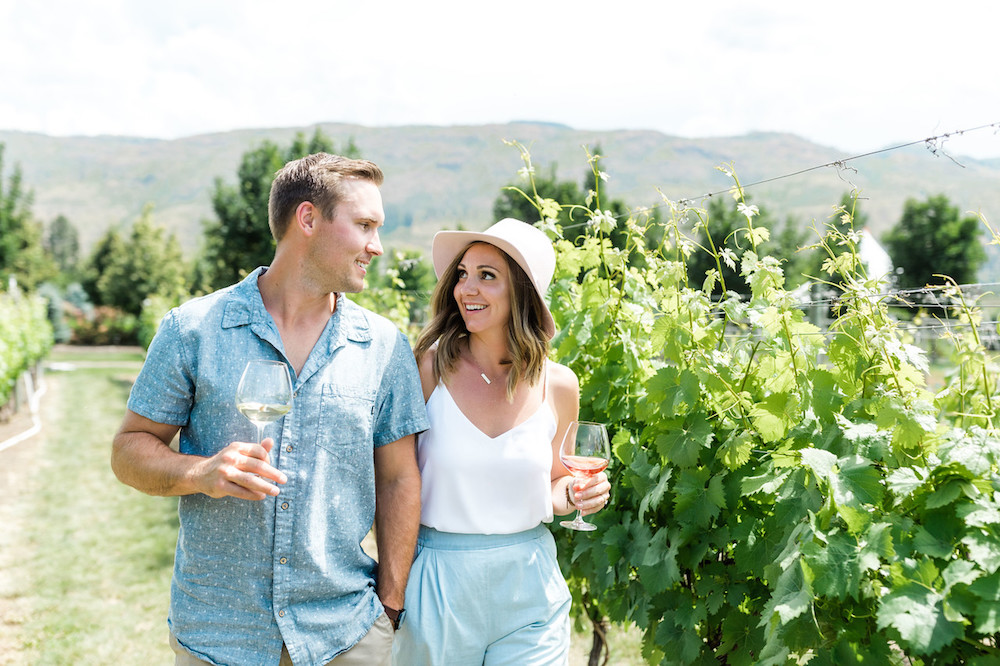
“It speaks to the quality of product that we’re delivering,” Prodan said. “It also talks to the buy B.C. initiatives, and it’s really about the consumer embracing it. We’re lucky here in B.C. I know when I talk to our counterparts in Ontario, where they produce 100 per cent Ontario wine, they don’t enjoy anywhere near that kind of market share.”
The growth is staggering, and 3.5% growth year over year is testament to that.
They are many reasons for the growth, of course, not the least of which are the wines being made there — a diverse collection of world-class wines from grape varieties that happily find a home in either the hot south, cooler north or high elevations throughout the Okanagan Valley (or a blend of regions). There is simply a style of wine for every consumer; there are no limits to what can be produced in B.C. and pretty much everything has either been tried or is being produced every vintage.
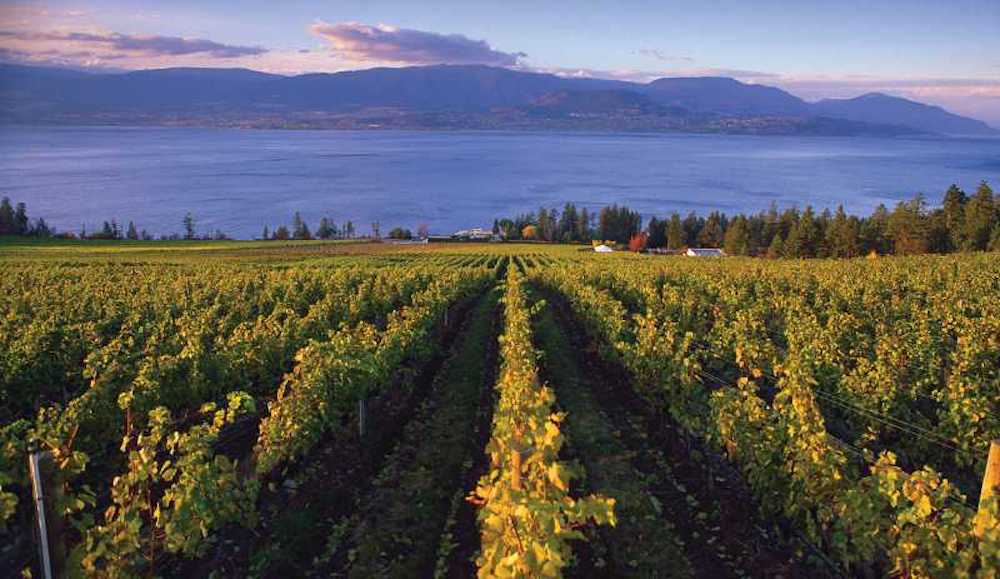
In this B.C. wine report, we have a question and answer session from former the talented Niagara winemaker Jeff Hundertmark (Stoney Ridge, Marynissen and his own label 100 Marks Wine) who addresses some of the reasons B.C. is booming.
Hundertmark (and his wife Kimberly, formerly the executive direct of the Niagara Grape and Wine Festival) left Stoney Ridge to run the winemaking operations for Mt. Boucherie and Rust Wine and recently snagged former Leaning Post assistant Niagara winemaker Ryan de Witte to make the wines at Rust.
The two wineries have big plans moving forward.
We have over 30 B.C. wine reviews (written by Rick VanSickle and Michael Lowe) for Mt. Boucherie and Rust plus Township 7, Road 13, Vanessa Vineyards and Mission Hill.
Q&A with Jeff Hundertmark
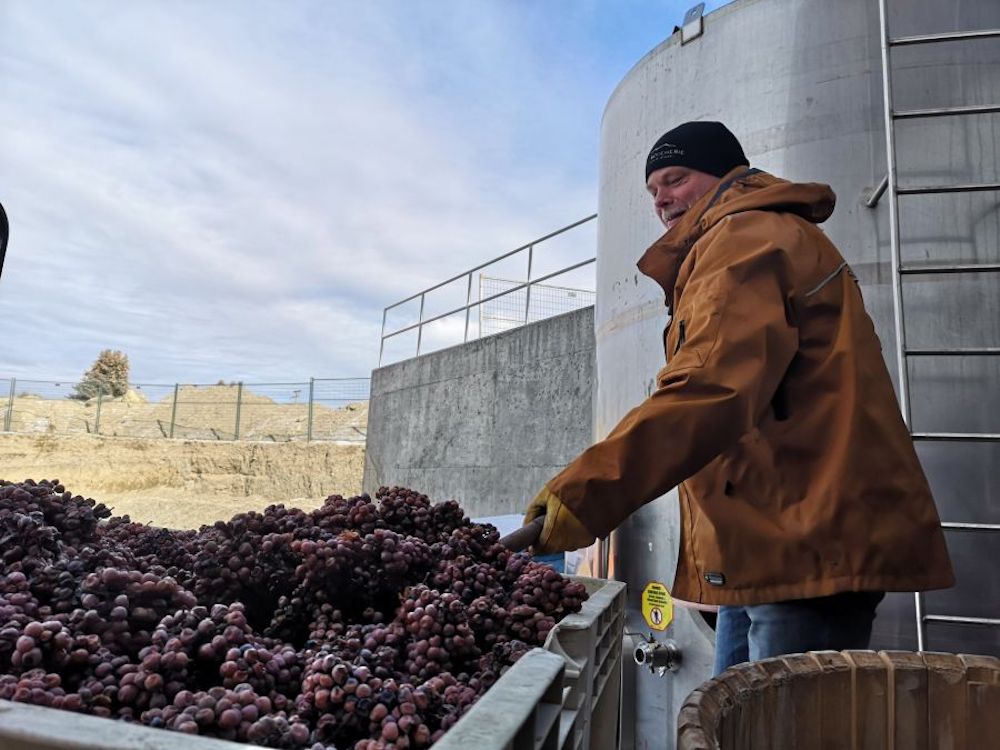
Wines In Niagara: Both you and Kim left your fully-entrenched lives in Niagara and headed to the Okanagan Valley. What are the striking differences you have found between the two wine regions and conversely, what are the similarities?
Jeff Hundertmark: In no particular order, the size of the Okanagan and Similkameen Valleys in comparison to Niagara is wild. From Lake Country down to Osoyoos is about a 2-2.5 hours drive, and our vineyards with Mt. Boucherie and Rust Wine Co. (West Kelowna, Okanagan Falls, Golden Mile Bench and South Cawston) are just about the most varied soil types, topography and mesoclimates you can have in such a relatively small region.
Also, the varieties of grapes that we grow here are vast, as I know you are aware, cooler climate stars like Riesling and Sauv Blanc to cross-over varieties such Ehrenfelzer, Pinot Gris, Pinot Noir and Gamay to Mediterranean varieties and one of my favorites to work with, Zinfandel! Crazy.
The marketing is a little more unconventional here, less formal, more fun and risk-taking. But like every wine region, the community is tight. The various Sub g-I’s (appellations) are very collegial, sharing ideas and resources are fairly widespread and assistance is always a quick phone call away. Back in Niagara, we had/have a great friend/colleague base, as you said, “fully entrenched.” It was a little difficult initially meeting people, so we are working at convincing all of Niagara to come join us here!

WIN: You have built quite a team there. Can you tell me how the two wineries are intertwined, what each is trying to achieve and how you keep the two brands separate?
JH: Both wineries are owned by a company out of Vancouver. Mt. Boucherie is the larger of the two wineries and has the majority of infrastructure. Rust was purchased in 2016 and up until the 2017/2018 vintage, wine was all made at Mt. Boucherie under the direction of the Mt. Boucherie head winemaker. In January 2018, I was hired to direct the wines of Rust Wine Co. In December 2018 I was made head Winemaker for Mt. Boucherie and Rust. I have just recently hired a winemaker (Ryan de Witte, above) to put his own spin on the wines for Rust, while I focus on the wines for Mt. Boucherie.
The main differences between the two wineries is Rust is focused on small lots of Merlot from 4 different vineyards, (this year 5 different vineyards including Naramata), and 4 different Syrahs, all wines vinified identically, with the only difference being the vineyard site. Rust also focuses on older vintage Zinfandel, some of the oldest Gew, an easy drinking Cab franc and Gamay.
Mt. Boucherie features more blending of the Vineyard sites, bringing the best attributes of the various terroir. We also produce some of only Blaufränkisch in the valley as well as several “field-blended” varieties and co-fermenting the varieties as one kindred blend.
Even this past vintage, wearing two hats, I successfully maintained difference in the batches, it was a challenge for sure, but not impossible … side note, CANNOT WAIT for Ryan to arrive!
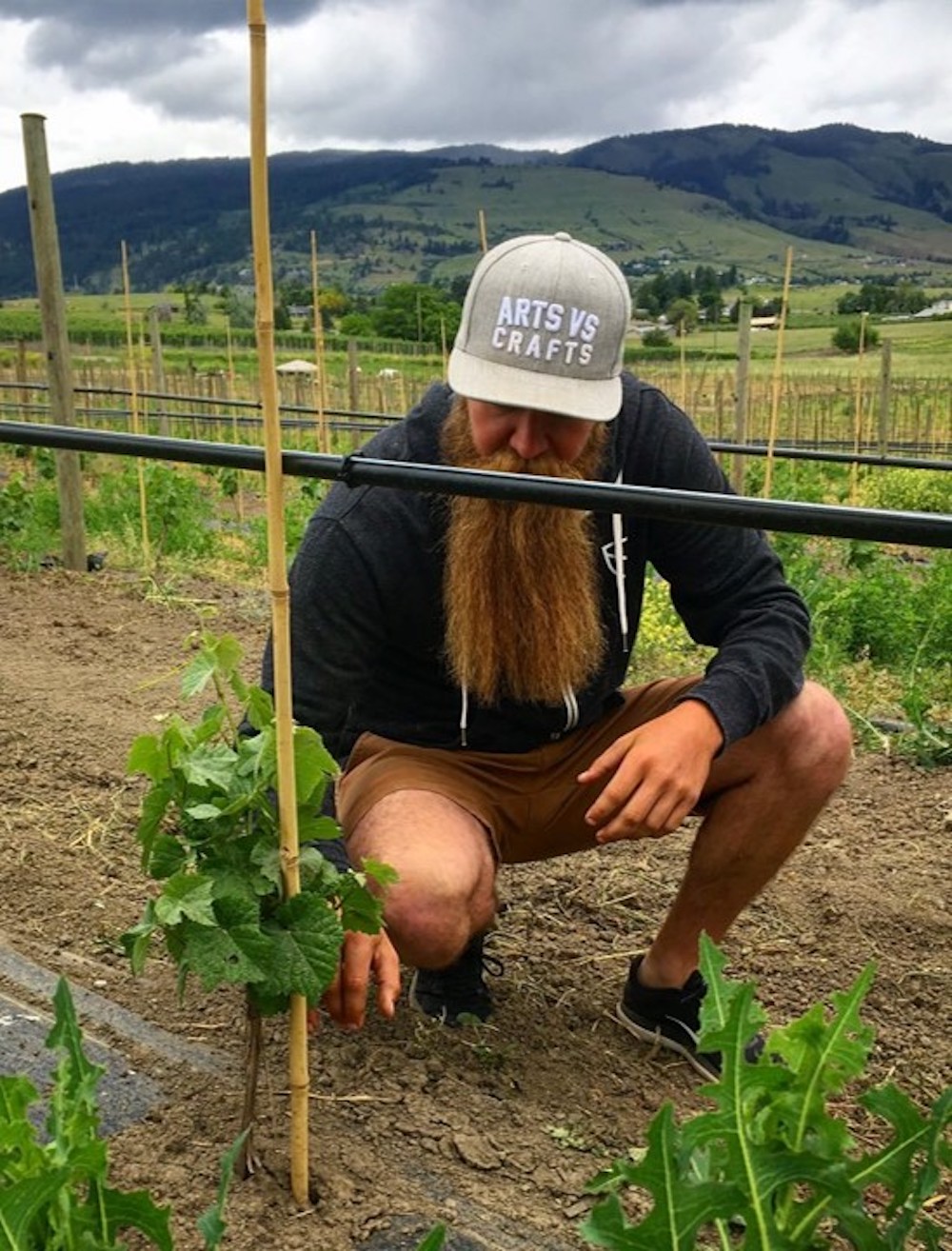
WIN: I notice a lot of the wines in both portfolios use both Okanagan and Similkameen fruit. I’m thinking that is because you can get the ripeness from the south and that bright acidity and minerality from Similkameen. Maybe you can explain the unique vineyard sources you have.
JH: Vineyards are really what we are all about! We own 300 acres of land, which are currently planted to just under 200 acres of vinifera. We have been farming conventionally since 1968, but recently hired a manager of viticulture (Brett Theissen, above) to help bring us to more sustainability using organic practices and some of his biodynamic witchcraft!
Starting in the north, our home farm at Mt. Boucherie in West Kelowna is planted to Zweigelt, Pinot Noir, and Gew, all of which is field blended and vinified together into our rosé for MB. Heading south we have vineyards in Okanagan Falls, called Lost Horn Vineyard, which is incredibly stony and treacherously uninviting for most farming, but Grapes LOVE it! (think Chateauneuf-du-Pape). Next is our vineyard at Rust Wine Co on the Golden Mile Bench (called South Rock Vineyard). Here we have again lots of stones, but also transitioning into sandy loam. This vineyard gets some of the longest growing degree-days in the area, and is located in the first sub-GI in B.C. We then control two more vineyards on the Golden Mile and three vineyards in Osoyoos and Black Sage Bench. Moving over to the Similkameen Valley, our (Lazy River Vineyard) in South Cawston, is the largest of our holdings at 75 acres and is home to the lion’s share of the grapes going into the Mt. Boucherie portfolio. The climate of the Similkameen is incredibly desert-like, with intensely dry heat in the daytime, and diurnal shifts of sometimes 25-30 degrees at night! The combination of sunshine and heat in the day providing sugar and ripeness, tempered with cool nights to help preserve the grapes and retain some of the much-needed acidity is key. Adding to the specialness of the area is the air movement, being planted on a massive slope with an icy cold mountain river at the bottom of the valley, the air as it blows down the valley, cycles and is constantly moderating. We also have another piece of land up in North Cawston which is being prepared for planting next year as our first 100% Organic vineyard.
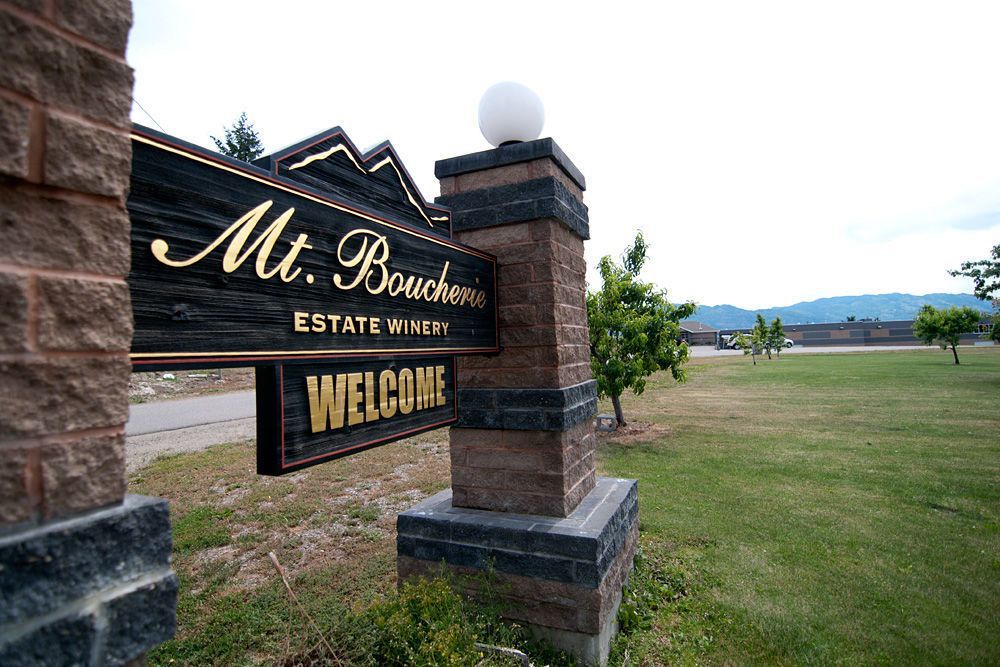
WIN: What is your vision from a winemaking standpoint for both Rust and Boucherie?
JH: With Rust and Ryan’s hand, we plan to continue to push the small lot bottlings, perhaps having multiple vineyard specific Gewurztraminer, Chardonnay, Zinfandel to go with the Merlot and Syrah. Also this year we will see our first Gruner Veltliner, which Ryan will be able to play with. This is our welcome to B.C. gift to him! He will hipster-it-up I am sure.
Mt. Boucherie will continue to create our flagship SUMMIT and this year I plan to pick multiple times through a block in order to achieve balance in the final blend; acid early in the harvest, sugar and higher phenolics in the latter part of the harvest. This vintage will also see the introduction of our line of “Original Vines” featuring older plantings of Semillon, Gewurztraminer, Chardonnay, Merlot, and Zinfandel. My plan is carry some of the sustainability practices from the vineyards into the cellar, utilizing and encouraging more spontaneous fermentations, longer cooler white fermentations and warmer shorter red fermentations. I will also continue to ferment most aromatic whites on their skins and put the de-stemmer away for most of the reds. Low impact, less filtering of reds, and more judicious use of sulphur.
WIN: You have a pretty diverse portfolio of wines on both sides, but what do you feel are the strengths in both labels?
JH: Personally, I am extremely happy with the skin-contact Gewurztraminers in both portfolios as well as the rosés in both. For Rust, I feel the Gamay is the best I have ever made and working with Syrahs that come onto my crush pad, phenolically ripe AND 26 brix is pretty (insert your favourite swear word here) brilliant!
Mt. Boucherie, I think, has a very strong blending program and I love our two Meritage-ish blends in Summit (Merlot, CF, CS, and Syrah) and Contessa (Merlot, Syrah, Zinfandel, Malbec and Petite Verdot)
Mt. Boucherie wines
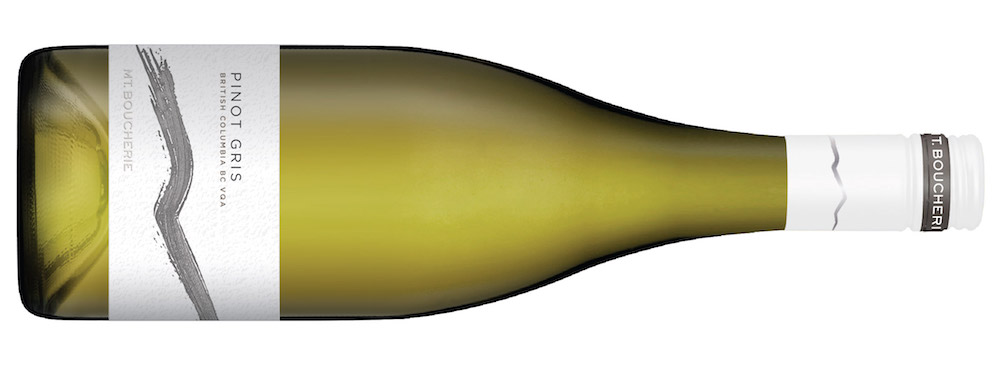 Mt. Boucherie Pinot Gris 2018 ($20, 88 points) — A blend of estate fruit from the Similkameen Valley and Osyoos with a nose of fresh-cut citrus, pear, peach and melon. Quite ripe and juicy on the palate with a range of stone fruits, citrus and a refreshingly dry finish.
Mt. Boucherie Pinot Gris 2018 ($20, 88 points) — A blend of estate fruit from the Similkameen Valley and Osyoos with a nose of fresh-cut citrus, pear, peach and melon. Quite ripe and juicy on the palate with a range of stone fruits, citrus and a refreshingly dry finish.
Mt. Boucherie Rosé 2018 ($22, 89 points) — This 100% Zweigelt rosé has a bold, expressive nose of summer cherries, strawberries, tangerine and citrus zest. There is subtle sweetness on the palate with some savoury notes to go with a full range of ripe red berries and mouth-watering acidity.
 Mt. Boucherie Gewurztraminer 2018 ($18, 89 points) — This is a skin-contact and wild fermented Gew with a highly aromatic nose of poached pear, jasmine, grapefruit with subtle lychee and rose petals. It has a dry impression on the palate, driven by racy acidity, with some flesh on the bones to go with creamy pear, grapefruit, apricot and ginger/jasmine notes on the finish.
Mt. Boucherie Gewurztraminer 2018 ($18, 89 points) — This is a skin-contact and wild fermented Gew with a highly aromatic nose of poached pear, jasmine, grapefruit with subtle lychee and rose petals. It has a dry impression on the palate, driven by racy acidity, with some flesh on the bones to go with creamy pear, grapefruit, apricot and ginger/jasmine notes on the finish.

Mt. Boucherie Summit 2016 ($55, 93 points) — This is a blend of the top blocks from estate vineyards in the Okanagan and Similkameen valleys. The blend of Merlot, Cabernet Franc, Cabernet Sauvignon, Malbec and Syrah was cropped to three tonnes per acre and was hand picked and hand sorted. It’s aged in 100% French oak barrels (35% new) for 24 months. Such a beautiful and enticing nose of ripe blackberries, toasted vanilla spice, succulent dark cherries and woodsy/earthy undertones. It’s rich, deep and complex on the palate with ripe notes of blackberries, cassis, red berries, anise, toasted vanilla bean, pepper, cocoa and earthy notes with lovely texture and verve on the vibrant finish. One to lay down for 10+ years. Bravo!

Mt. Boucherie Reserve Merlot 2017 ($25, 91 points) — A blend of Similkameen and Okanagan valley fruit with a ripe nose of black cherries, raspberry tart, anise, licorice, oak spice and graphite. It’s nicely balanced on the palate with a heady broth of ripe red fruits, currants, cedar, elegant spice notes, caressing tannins and a long finish. Cellar 5+ years.
Rust Wine Co.
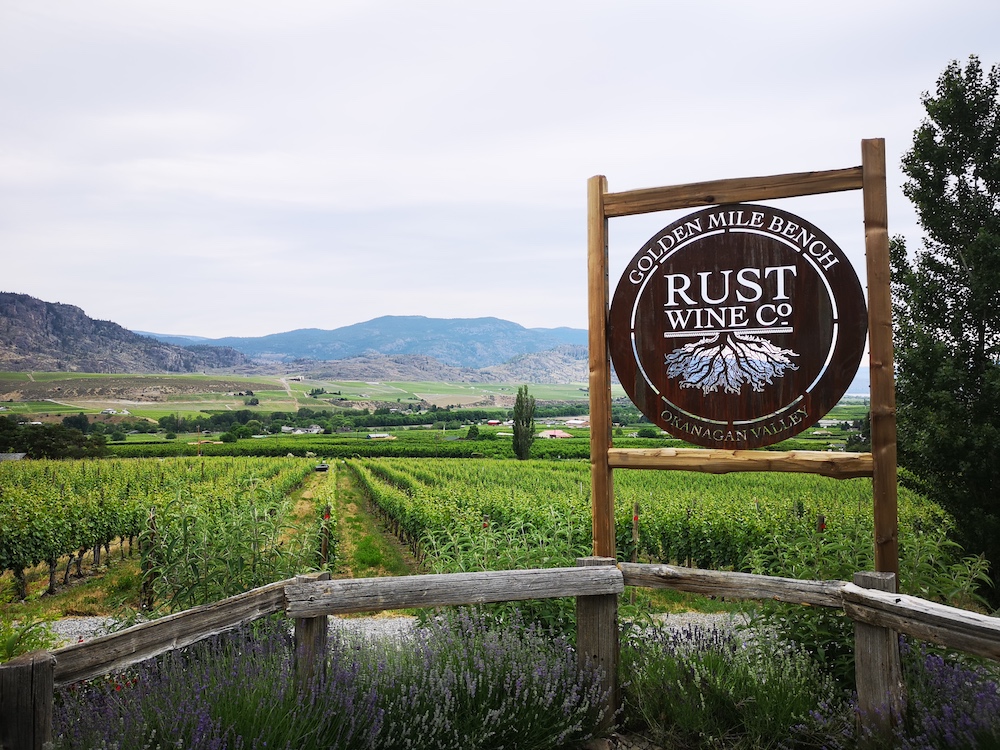
Rust Wine Co. Gewurztraminer 2018 ($18, 88 points) — This Golden Mile Bench offering was wild fermented on the skins and has an exotic nose of ginger, grapefruit, nutmeg, lychee, apricot and a floral note. A touch off-dry on the palate with lovely ginger spice, round/ripe exotic tropical fruits with a rich, textured feel through the finish.
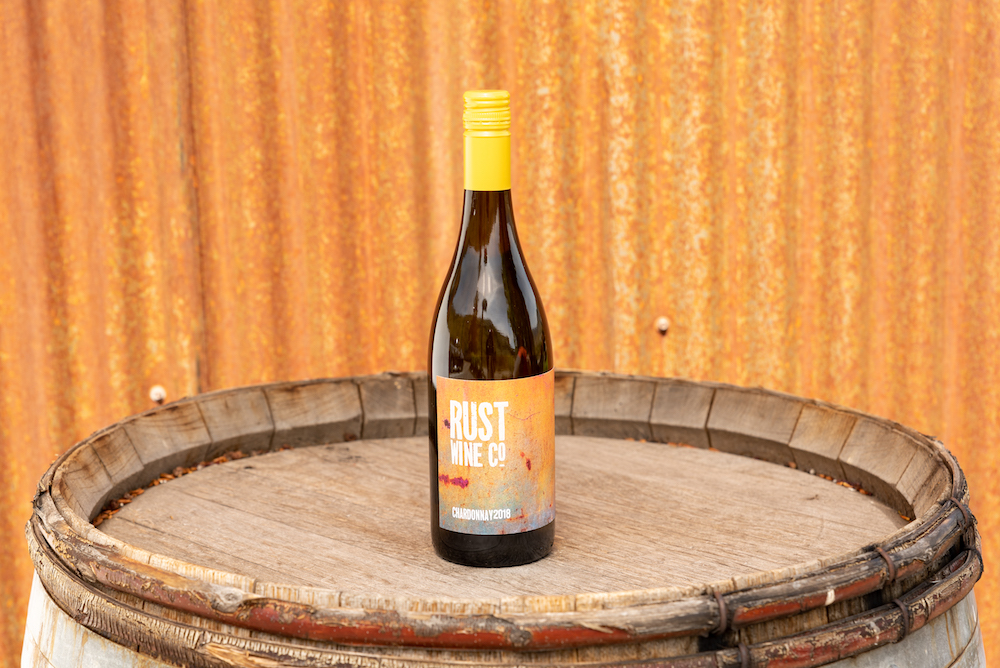
Rust Wine Co. Chardonnay 2018 ($21, 89 points) — A fresh take on Chardonnay from the Golden Mile Bench with no oak (all stainless steel, wild fermented) and no malo. It has an uninhibited nose of fresh apples, essence of citrus, pear and a floral accent. It’s pure and bright on the palate with apple, pear, citrus and a zesty finish.
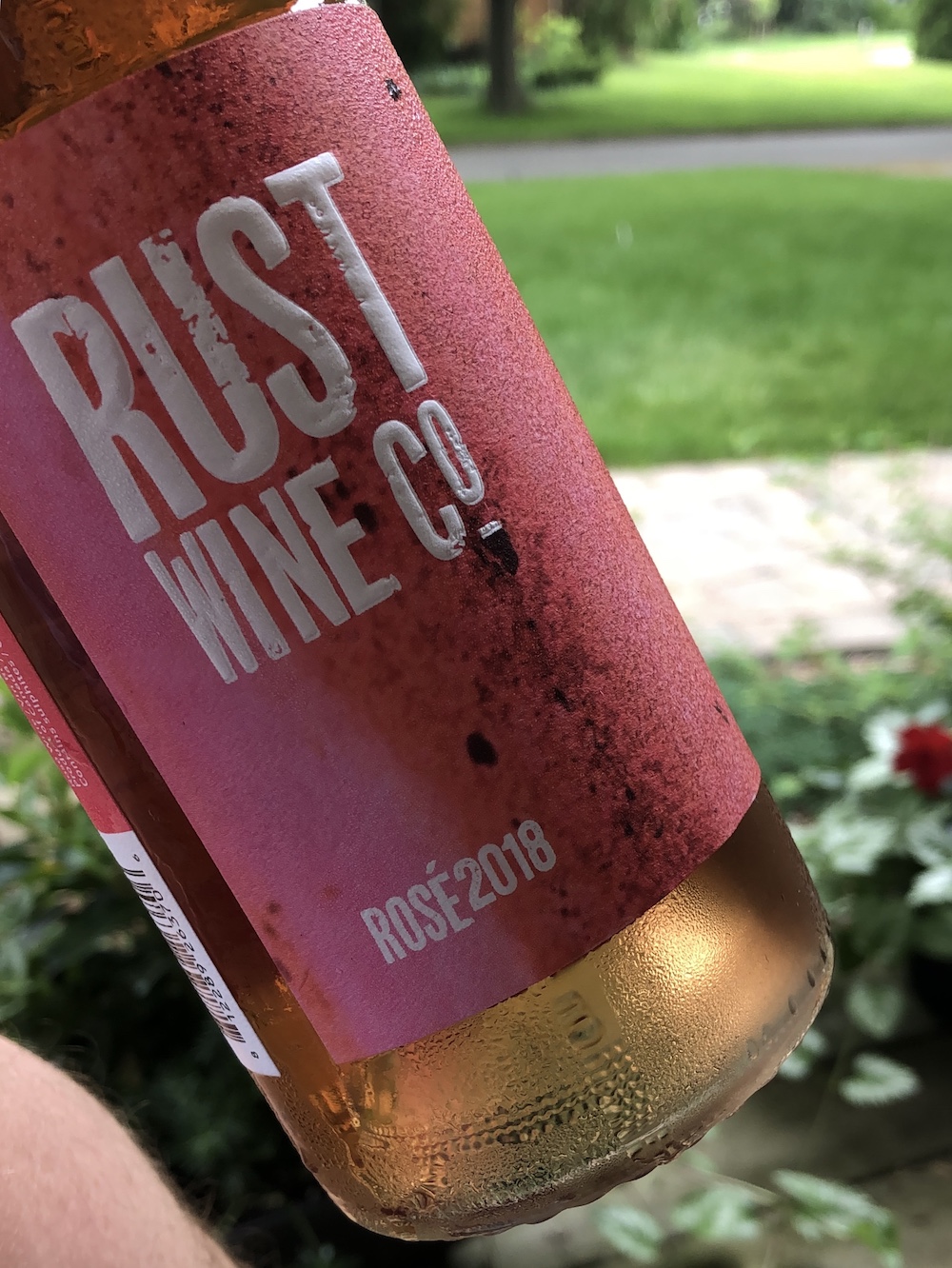
Rust Wine Co. Rosé 2018 ($22, 88 points) — Made from 100% wild fermented Merlot from the Similkameen Valley with a nose of fresh strawberries, violets and citrus zest. There is a note of sweetness on the palate but balanced by that Similkameen acidity and minerality with lovely strawberries, savoury/earthy notes, citrus zest and a vibrant finish.
Rust Wine Co. Merlot 2016 ($35, 90 points) — Rust makes three versions of the Merlot, this one is from the Golden Mile Bench planting. The nose displays forest berries, dark cherries, brambly raspberries, smoky/savoury notes and barrel oak spices. There is a range of lovely dark and red savoury fruits, punctuated by black currants, anise and cherries, with supple tannins and a vibrant core of acidity. Drinking fine right now but can cellar 3+ years.

Rust Wine Co. Syrah 2017 ($37, 91 points) — This is aged in a blend of American and French oak, 38% of which is new barrels. Classic Syrah with a nose charcuterie, smoke, spice then thick dark fruits, boysenberries and graphite. It is gorgeous on the palate with meaty dark fruits and smoky/spicy/peppery notes and uplifting acidity on a long finish. Cellar 5+ years.

Rust Wine Co. Cabernet Franc 2017 ($25, 92 points) — Fruit is from Okanagan Falls and spends 13 months in French oak barrels (20% new). I love this less is more approach when the instinct would be to go bigger. It’s a well-defined, classic Cab Franc with a nose of wild raspberries, dried herbs, bramble, dark cherries and leafy tobacco. It’s not weighty at all on the palate with fresh herbs, savoury spice notes, licorice, crushed red berries and vibrancy through the finish. Rocking it right now.
Rust Wine Co. Zinfandel 2017 ($40, 90 points) — Clocking in at 15.9% abv, this is a monster. It’s aged in all French oak, 50% of which is new, and finished unfined and unfiltered. I brought this to a gathering of Niagara winemakers to share one evening and opinions were mixed, with some expressing shock at the high alcohol and others down with it, after all, this is zinfandel and consumers expect that kind of headiness in their Zins. When Americans come to visit, it’s likely the first thing they grab, while Canadians are a little more comfortable with abv in the 13% range for reds and even less for whites. You will have to be the ultimate judge, but for me, it’s a well-made Zin with a full-throttle nose of ripe plums, cassis, black currant jam, graphite and layer upon layer of spices. It’s jammy and mouth-filling on the palate with bold dark plums, sweet black cherry kirsch, chocolate and currants that’s all framed by big, showy tannins and decent acidity on the back end. Is it balanced? No, and it doesn’t try to be. It’s nearly impossible to balance a wine that has that much alcohol. Here’s the deal, light a big fire in the backyard, grab a Muskoka chair and enjoy. Might even light up a nice Cuban cigar — this Zin is your muse.
Road 13 Vineyard
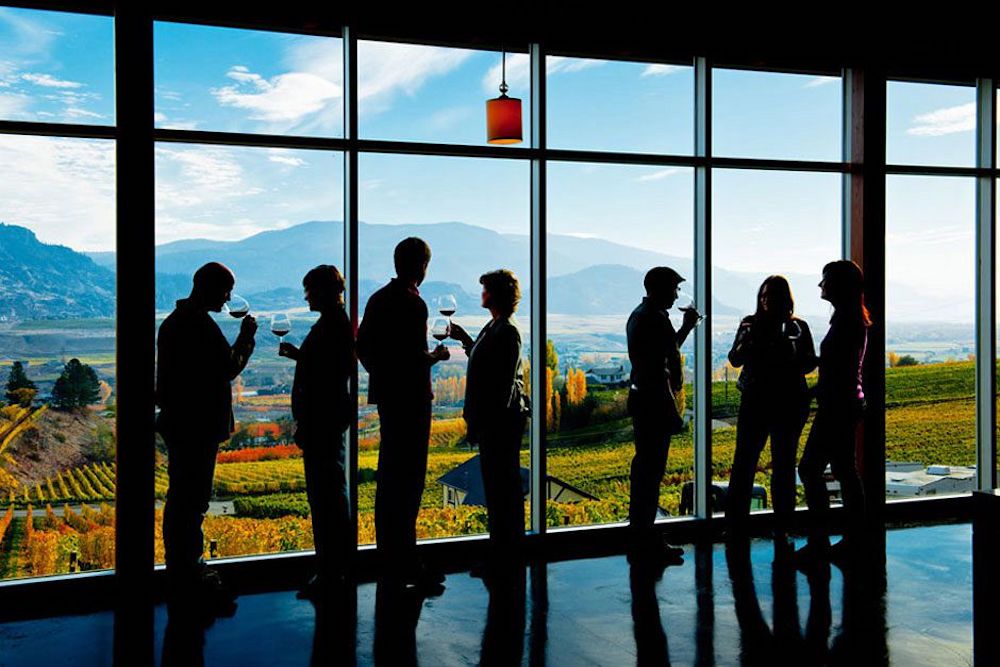
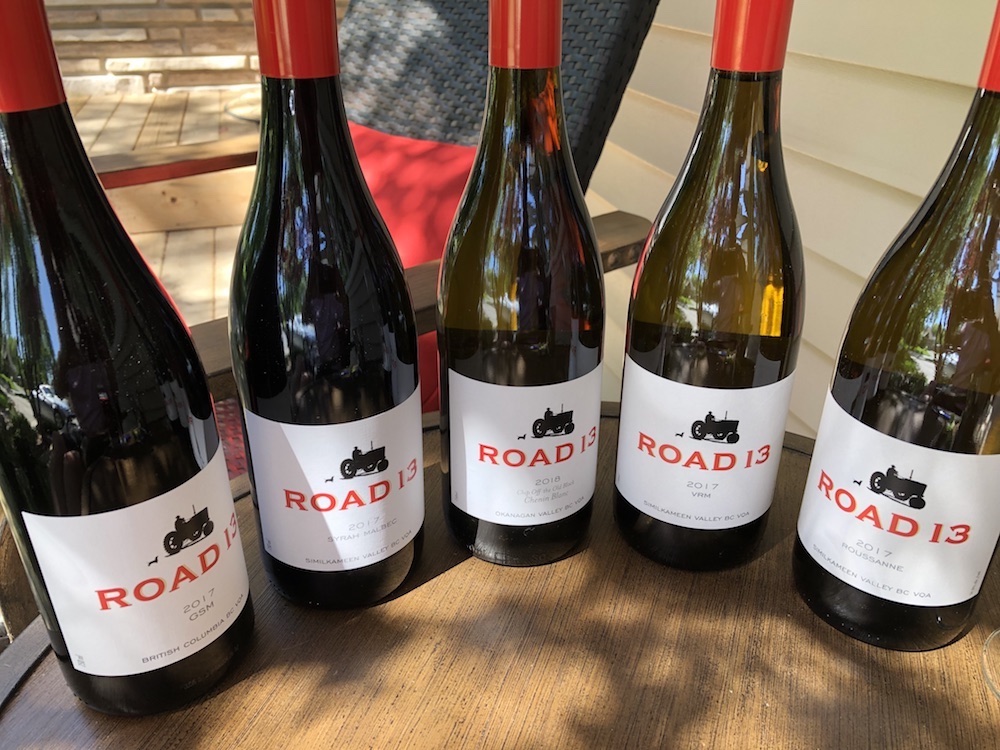
Road 13 Chip off the Old Block Chenin Blanc 2018 ($21, 91 points) — The fruit, which is 94% Chenin with 5% Orange Muscat and 1% Viognier, is primarily from estate vineyards on the Golden Mile Bench. What a lovely, fresh Chenin with a nose of lime zest, green apple and tropical fruit notes. It’s a much lighter style of Chenin but the guava/apricot flavours are ripe on the palate and balanced by lemon-lime zest with just a hint of honey on the vibrant finish.
Road 13 Roussanne 2017 ($26, 92 points) — A surprisingly delicious treat from this Rhone-varietal focused Okanagan producer. It has an enticing nose of apricots, wild honey, savoury wild flowers, peach pie and a hint of spice. It has a viscous/oily/creamy feel on the palate with an exotic tropical fruit attack up front followed by orange rind, peaches and spice that’s altogether round and ripe with a mouth-watering finish. Might try aging this a couple of years to see how it develops.
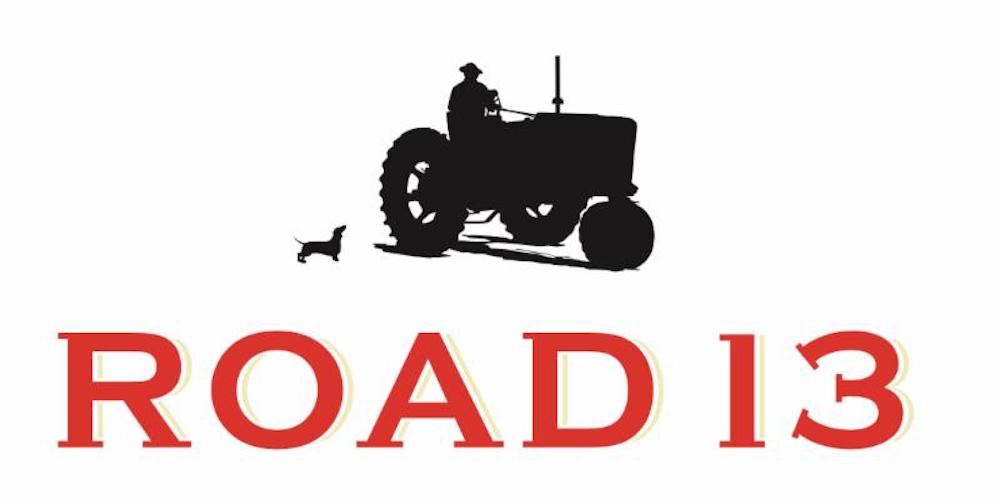 Road 13 VRM 2017 ($26, 90 points) — This appealing blend of Viognier, Roussanne and Marsanne has a nose of apricots, golden delicious apples, peach, tangerine and ginger notes. It’s rich, ripe and fills the mouth with flavours of peach, apricot, pineapple, ginger and wild honey with mouth-watering acidity on the finish.
Road 13 VRM 2017 ($26, 90 points) — This appealing blend of Viognier, Roussanne and Marsanne has a nose of apricots, golden delicious apples, peach, tangerine and ginger notes. It’s rich, ripe and fills the mouth with flavours of peach, apricot, pineapple, ginger and wild honey with mouth-watering acidity on the finish.
Road 13 GSM 2017 ($39, 91 points) — This Rhone-style blend of Grenache, Mourvedre and Syrah shows a meaty/earthy/savoury nose of plums, currants, oak spice, anise and toasted vanilla bean and peppery spices. Turns prettier on the palate with black cherries and raspberry bramble emerging over the darker fruits with friendly tannins, integrated spice, and perky acidity to keep it vibrant and balanced on the finish.
Road 13 Syrah Malbec 2016 ($37, 90 points) — A floral/peppery nose with boysenberry, blueberries, kirsch, vanilla bean and savoury spice notes. It’s soft and smooth on the palate with polished tannins, darker fruits, anise, pepper, cassis, black licorice and a bit of heat on the finish from the 14.7% abv. Altogether a nicely structured wine that would pair nicely with charcuterie, game or grilled red meats.
Mission Hill Family Estate Winery
(Reviews by Michael Lowe)

Mission Hill Reserve Pinot Gris 2018 ($23, 90 points) — Perfumed with scents of white peach, pear, lemon and honeycomb. On the palate fresh peach and pear prevail with a lemon-drop candy note mid-palate. There’s a clean, precise minerality on the finish, which paired nicely with raw oysters. (ML)
 Mission Hill Reserve Sauvignon Blanc 2018 ($23, Vintages, previously reviewed, 90 points) — The nose is brimming with classic Sauvignon Blanc aromas of gooseberry and fresh-cut grass with tropical notes of passion fruit and lemongrass. Quite explosive on the palate with ripe gooseberry at the fore, layered with plenty of citrus and fruit replays on the long finish. (ML)
Mission Hill Reserve Sauvignon Blanc 2018 ($23, Vintages, previously reviewed, 90 points) — The nose is brimming with classic Sauvignon Blanc aromas of gooseberry and fresh-cut grass with tropical notes of passion fruit and lemongrass. Quite explosive on the palate with ripe gooseberry at the fore, layered with plenty of citrus and fruit replays on the long finish. (ML)

Mission Hill Reserve Limited Edition Viognier 2018 ($24, Vintages, previously reviewed, 90 points) – Aromatic, with floral notes of orange blossom and violets followed by orchard stone fruits and a spicy undertone. The palate expresses juicy ripe peach, pear, zesty lime and a gingery spice character mid-palate. Full bodied, beautifully balanced with a rich mouthfeel, vibrant acidity and very good length. (ML)
 Mission Hill Reserve Shiraz 2016 ($30, 91 points) — Concentrated nose shows aromas of mulberry, blackberry and black plums with a whiff of white pepper, menthol and cedar. It’s rich, ripe and explosive on the palate with replays of dark fruit with some spice notes and coffee on the long finish. Well balanced with lively acidity and firm tannins. (ML)
Mission Hill Reserve Shiraz 2016 ($30, 91 points) — Concentrated nose shows aromas of mulberry, blackberry and black plums with a whiff of white pepper, menthol and cedar. It’s rich, ripe and explosive on the palate with replays of dark fruit with some spice notes and coffee on the long finish. Well balanced with lively acidity and firm tannins. (ML)

Mission Hill Reserve Merlot 2016 ($30, Vintages, previously reviewed, 91 points) – A highly toned and fragrant nose exhibits ripe blackberry/plum at the core with suggestions of cedar, spice, earth and graphite. Bursting with the same ripe, dark fruit on the palate, there’s a savoury hint of cured meat on the lengthy finish. The richness and depth belies the alcohol, which weighs in at 14.8%. Drinking well now or cellar up to five years. (ML)

Mission Hill Reserve Cabernet Sauvignon 2016 ($30, 90 points) — The nose is all about intense cassis and blackberry with nuances of new leather and fresh mint. The ripe fruit takes centre stage on a palate backed up with fresh acidity and a decent grip of tannin on the finish. (ML)
Vanessa Vineyard
(Reviews by Michael Lowe)
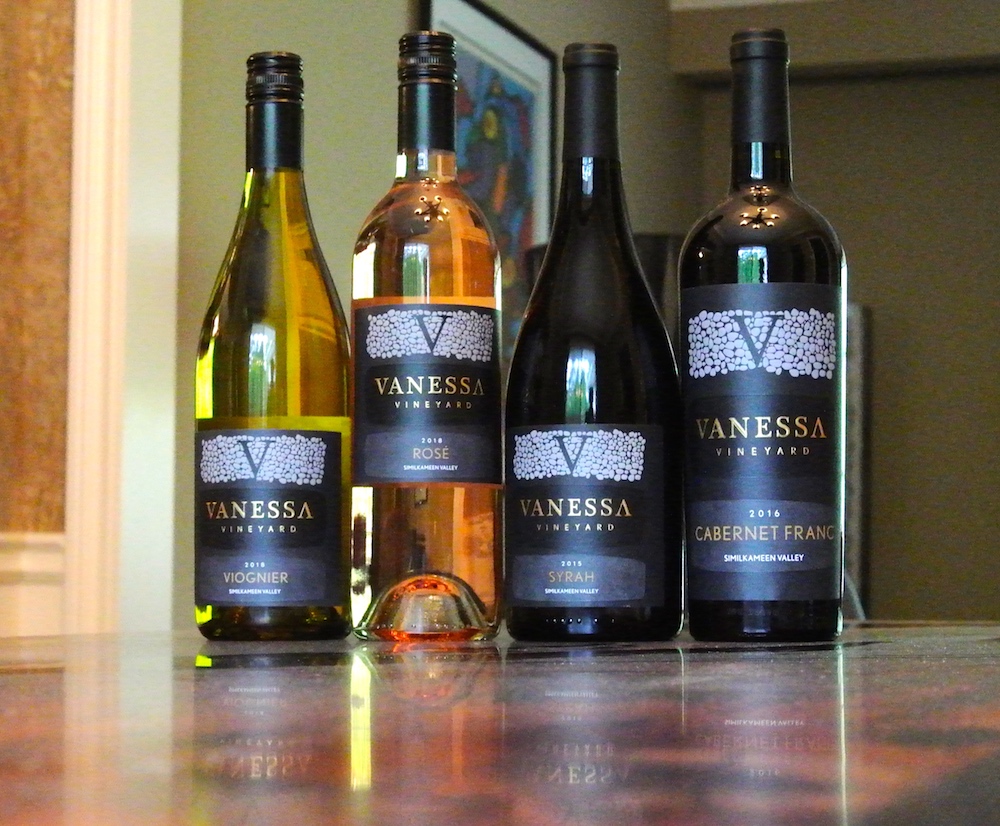
Vanessa Vineyard Syrah 2015 ($35, 91 points) — A big, voluptuous Syrah to be sure with gobs of black cherry, plum and blueberries on the nose — and there’s a savoury edge with pepper, dried herbs and a meaty note lurking in the background. The full-on, lush dark fruit with lively acidity and fine tannins makes for an impressive, beautifully constructed wine. (ML)
Vanessa Vineyard Cabernet Franc 2016 ($50, 90 points) — Straightforward, classic, broad-shouldered Franc at a whopping 15.5% abv. The alcohol is easily offset by the intense red berry fruit, dried floral notes, and some graphite and dusty oak. Fresh raspberry and red plum grace the palate along with dried herbs and a touch of mocha on the finish. Nicely integrated and drinking well now. (ML)
Vanessa Vineyard Rosé 2018 ($25, 89 points) — A blend of Syrah and Merlot, the wine expresses lifted aromas of apple, raspberry and dried thyme with a trace of white pepper. A very nice, drier style of rosé with tart apple, red berry and citrus up front, brilliant acidity and lingering mineral notes.
Vanessa Vineyard Viognier 2018 ($25, 89 points) – Generously aromatic with floral notes of honeysuckle and rose, along with peach, honey and lemon. The peach character on the palate is framed with grapefruit pith and lemon-lime. Zesty, mouthwatering acidity make it the perfect partner for rich seafood, buttery sauces or soft cheeses.
Township 7 Vineyards and Winery

Township 7 Reserve Sauvignon Blanc 2018 ($27, 91 points) — This barrel fermented and aged in oak for 7 months SB from the estate Blue Terrace Vineyard in North Oliver is quite elegant with a nose of passion fruit, gooseberry, grassy/herb notes, grapefruit and subtle spice. It’s round and ripe on the palate with kiwi, hay, gooseberry, citrus zing and a balanced approach to the spice notes on the finish. Perfect pairing for shellfish and grilled spot prawns.
Township 7 Riesling Fool’s Gold Vineyard 2017 ($25, 89 points) — A ripe and highly aromatic Riesling from the Fool’s Gold Vineyard in Oliver with lime, orange blossom, lemon pith and crisp green apple. It’s fresh on the palate with a hint of sweetness to go with citrus, lime zest, minerality and a vibrant finish.
Township 7 Rosé 2018 ($22, 90 points) — A blend of Merlot, Cabernet Sauvignon, Malbec and Petit Verdot from estate fruit in Naramata and Oliver. It shows a pretty pale salmon colour in the glass with a nose of rhubarb, fresh strawberries and savoury/herbaceous accents. Perfectly dry and crisp on the palate with fine texture and a range of red berries, rhubarb, cranberries and a fresh, vibrant finish.
Township 7 Reserve 7 2016 ($27, 92 points) — From four terroirs in the Okanagan Valley, this is a blend of Merlot, Cabernet Franc, Cabernet Sauvignon, Malbec and Petit Verdot that spent 24 months in a combination of French and American oak barrels. It has a heady nose of blackberries, cherries, earth, forest floor, black currants and elegant spice notes. It’s ripe and rich on the palate with a range of dark fruits, touch of kirsch and earthy/meaty notes to go with fine-grained tannins and integrated spice on a finessed finish.






Comment here